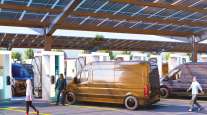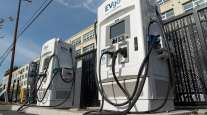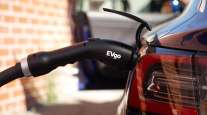US Has a Fast EV-Charging Station for Every 15 Gas Stations
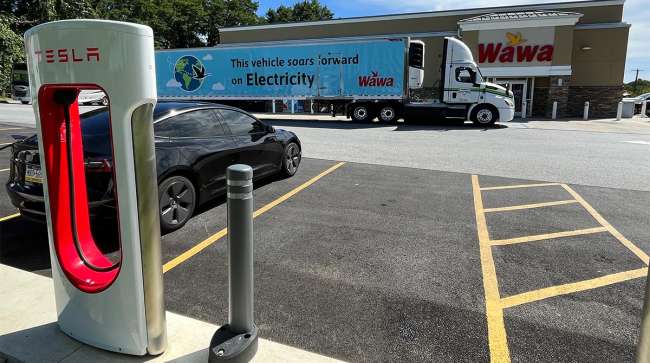
[Stay on top of transportation news: Get TTNews in your inbox.]
Automakers may be pumping the brakes on EV production in the U.S., but charging challenges — traditionally a major hurdle to adoption — are vanishing at a rapid clip.
Almost 600 public fast-charging stations were switched on for U.S. drivers in the first three months of the year, a 7.6% increase over the end of 2023, according to a Bloomberg Green analysis of federal data. There are now almost 8,200 quick-turn EV stations across the country, or one for every 15 gas stations. Tesla is responsible for slightly more than one quarter of them.
“EV demand has slowed, but it hasn’t stopped,” said Chris Ahn, head of electrification consulting at Deloitte. “[There] aren’t a ton of charging deserts left. A lot of location problems have been solved.”
The first-quarter infrastructure blitz was fueled in part by the Biden administration’s National Electric Vehicle Infrastructure program, a $5 billion plan to fill in the remaining gaps in the charging map. Federal money recently switched on a fast-charging station at the Kahului Park & Ride on Maui, for example, and another outside the Hannaford Supermarket in Rockland, Maine.
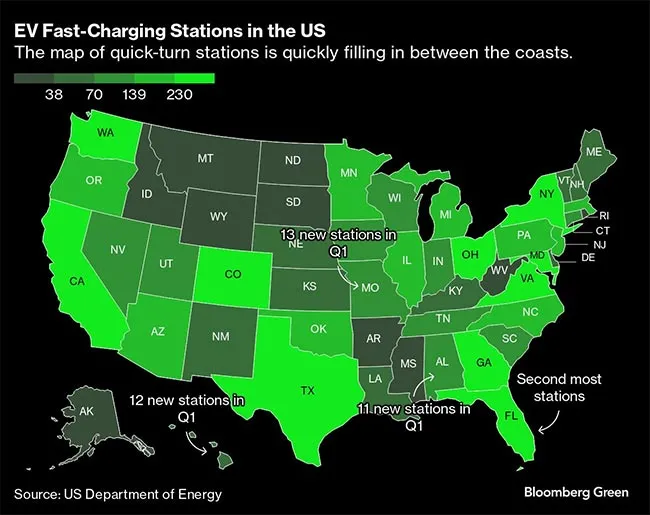
As states start deploying the Biden cash in earnest, U.S. drivers can expect a rash of similar openings. For now, though, there’s more of an invisible hand behind the growth in charging stations. An increasing number of electric cars are hitting the streets, which is improving the economics for the companies running charging networks. Their hardware is busier than it has ever been, boosting expansion plans and bringing profitability within reach.
BloombergNEF estimates that annual worldwide public-charging revenue will rise to $127 billion by 2030, with Tesla on track to account for $7.4 billion of that.
“We are getting closer to where a lot of these charging stations actually turn profitable,” said Philipp Kampshoff, who leads McKinsey’s Center for Future Mobility. “Now, you have a sort of line of sight and then obviously it makes sense to scale further.”
Kampshoff said the next wave of EV buyers is likely to include a larger contingent of drivers who live in apartment buildings and rely heavily on public stations instead of plugging in at home.
Retailers are also fueling the charger boom, increasing the number of places U.S. drivers can top up their EV battery while snagging a White Claw or a breakfast burrito (hopefully not at the same time). Of the chargers that went online in the first quarter, 10 opened at Buc-ee’s convenience store locations and another nine at Wawas.
In part because of those bets, the U.S. public-charger landscape is swiftly expanding beyond the coasts. Indiana, for example, switched on 16 new fast-charging stations between January and April. Missouri and Tennessee each cut the ribbon on 13 new stations, while Alabama got 11 new places to plug in.
Want more news? Listen to today's daily briefing above or go here for more info
For all the growth in public plugs, EVs are still trying to overcome the stigma of a dearth of charging, according to Samantha Houston, senior vehicles analyst at the Union of Concerned Scientists. “There tends to be a lag in when the charging infrastructure is out there and visible and when public perception catches up to it,” she explained. “In some areas of the country, it’s just not as easy to see.”
One would do worse, however, than to check the local Buc-ee’s.


